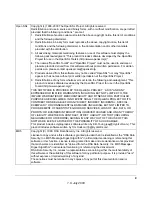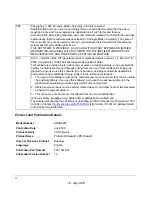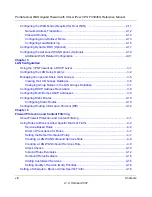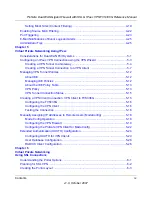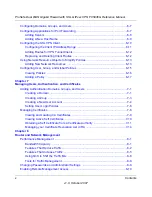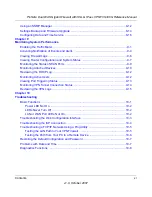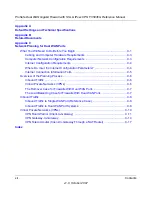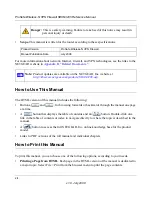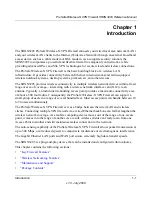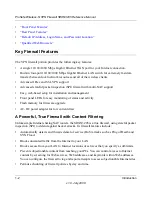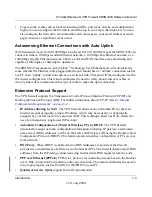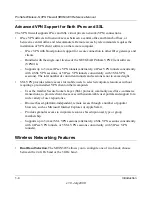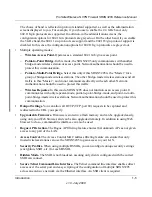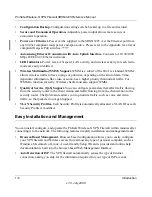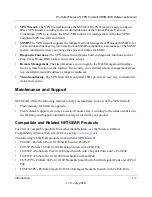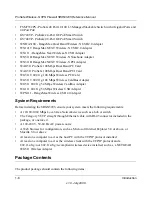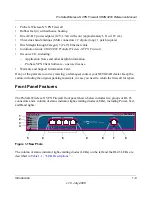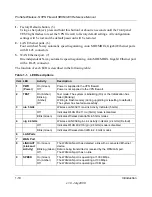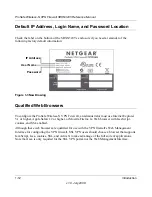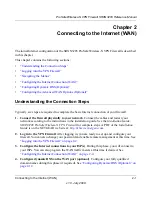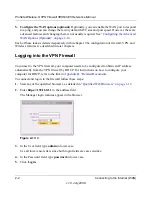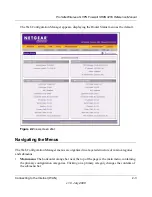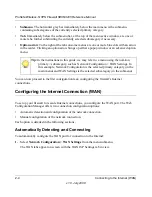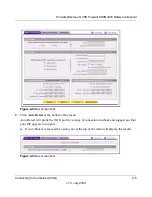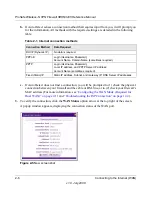
ProSafe Wireless-N VPN Firewall SRXN3205 Reference Manual
Introduction
1-3
v1.0, July 2008
•
Logs security events such as blocked incoming traffic, port scans, attacks, and administrator
logins. You can configure the firewall to email the log to you at specified intervals. You can
also configure the firewall to send immediate alert messages to your email address or email
pager whenever a significant event occurs.
Autosensing Ethernet Connections with Auto Uplink
With its internal 5-port 10/100/1000 Mbps switch and 10/100/1000 WAN port, the SRXN3205 can
connect to either a 10 Mbps standard Ethernet network, a 100 Mbps Fast Ethernet network, or a
1000 Mbps Gigabit Ethernet network. The five LAN and WAN interfaces are autosensing and
capable of full-duplex or half-duplex operation.
The SRXN3205 incorporates Auto Uplink
TM
technology. Each Ethernet port will automatically
sense whether the Ethernet cable plugged into the port should have a “normal” connection such as
to a PC or an “uplink” connection such as to a switch or hub. That port will then configure itself to
the correct configuration. This feature eliminates the need to worry about crossover cables, as
Auto Uplink will accommodate either type of cable to make the right connection.
Extensive Protocol Support
The VPN firewall supports the Transmission Control Protocol/Internet Protocol (TCP/IP) and
Routing Information Protocol (RIP). For further information about TCP/IP, refer to
“Internet
Configuration Requirements” on page C-4
.
•
IP Address Sharing by NAT
. The VPN firewall allows many networked PCs to share an
Internet account using only a single IP address, which may be statically or dynamically
assigned by your Internet service provider (ISP). This technique, known as NAT, allows the
use of an inexpensive single-user ISP account.
•
Automatic Configuration of (Wired & Wireless) PCs by DHCP
. The VPN firewall
dynamically assigns network configuration information, including IP, gateway, and domain
name server (DNS) addresses, to PCs on the LAN and Wireless LAN using the Dynamic Host
Configuration Protocol (DHCP). This feature greatly simplifies configuration of PCs on your
local network.
•
DNS Proxy
. When DHCP is enabled and no DNS addresses are specified, the firewall
provides its own address as a DNS server to the attached PCs. The firewall obtains actual DNS
addresses from the ISP during connection setup and forwards DNS requests from the LAN.
•
PPP over Ethernet (PPPoE)
. PPPoE is a protocol for connecting remote hosts to the Internet
over a DSL connection by simulating a dial-up connection. This feature eliminates the need to
run a login program such as EnterNet or WinPOET on your PC.
•
Quality of Service (QoS)
support for traffic prioritization.

